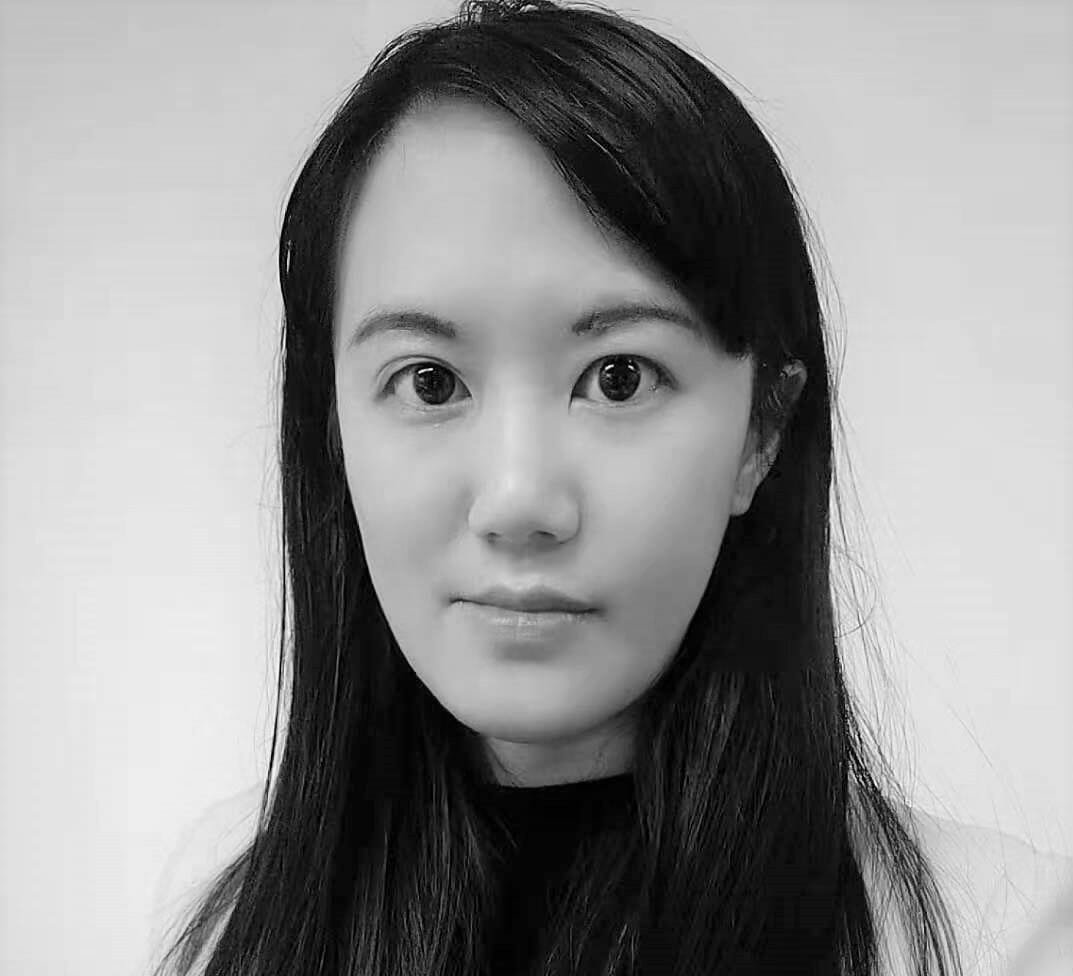Have you ever struggled with expressing precise time expressions in Chinese? Do you find it challenging to convey completed actions, durations, or future changes accurately?
In this comprehensive guide, we will dive deep into the essential aspect particle ‘了’ (le) in Chinese grammar and its role in expressing time. By understanding and mastering the usage of ‘了’ (le), you will gain the ability to navigate time expressions with confidence in your Chinese conversations and writing.
Table of Contents
ToggleKey Takeaways:
- Mastering the aspect particle ‘了’ (le) is crucial for accurate time expression in Chinese.
- ‘了’ (le) is used to indicate completed actions, durations, ongoing actions, and future changes.
- Understanding situational contexts is vital to interpret ‘了’ (le) correctly.
- Avoid common mistakes and pitfalls to improve your language proficiency.
- ‘了’ (le) interacts with other aspect particles to convey complex temporal meanings.
What are Aspect Particles in Chinese?
In the realm of Chinese grammar, aspect particles play a crucial role in shaping the meaning and nuances of sentences. These particles, such as ‘了’ (le), serves as linguistic tools that indicate different aspects of an action or event, including completion, duration, continuation, and even future implications. Understanding and mastering aspect particles is essential for expressing precise temporal relationships in Chinese.
Aspect particles function as grammatical elements that modify verbs, transforming their meaning and adding specific temporal information. They provide valuable context and help convey the speaker’s intentions and perspectives. By employing aspect particles effectively, you can not only navigate the intricacies of Chinese grammar but also communicate more accurately and fluently.
Let’s take a closer look at some common aspect particles in Chinese and how they contribute to the overall structure and meaning of sentences:
“他已经做完了。”
Translation: “He has finished it.”
In this example, the aspect particle ‘了’ (le) indicates the completion of the action. The sentence conveys that the person has already finished the task. Through a careful selection and placement of aspect particles, speakers can express precise time relationships and provide clarity to their statements.
Let’s explore the different aspect particles in Chinese grammar and how they contribute to the overall language structure and semantics through the following table:
| Aspect Particle | Function |
|---|---|
| 了 (le) | Indicates completed actions or changes |
| 过 (guò) | Expresses actions experienced in the past |
| 着 (zhe) | Shows ongoing or continuous actions |
| 着 (zhe) + 了 (le) | Combines ongoing and completed actions |
| 过 (guò) + 了 (le) | Signifies experiences in the past |
| 将 (jiāng) | Indicates future actions or changes |
As you can see from the table, aspect particles bring versatility to Chinese grammar by allowing speakers to express various temporal relationships with precision. By familiarizing yourself with these particles and their functions, you will gain a solid foundation for mastering Chinese grammar and effectively conveying your intended meanings.
Introducing ‘了’ (le)
In this section, we will delve into the aspect particle ‘了’ (le) and its basic usage in Chinese. The primary function of ‘了’ (le) is to indicate completed actions or states. Understanding how to use ‘了’ (le) correctly is crucial for expressing past events or situations accurately in Chinese.
Using ‘了’ (le) for Past Actions
When it comes to expressing past actions in Chinese, the aspect particle ‘了’ (le) plays a crucial role. By understanding its usage and influence on sentence structure, you can effectively convey completed actions that occurred in the past. Here, we delve deeper into how ‘了’ (le) is used for representing past events, enabling you to solidify your understanding.
One important aspect to note is that ‘了’ (le) is often placed at the end of a sentence or after the verb to indicate that the action has been completed. It signifies a change in the state or the accomplishment of the verb’s objective. Let’s take a look at some examples:
Wǒ kànle yī běn shū 我看了一本书.
I read a book.
Tā chīle wǔ gè píng guǒ 他吃了五个苹果.
He ate five apples.
In these examples, ‘了’ (le) indicates that the actions of reading a book and eating five apples have been completed in the past. By adding ‘了’ (le) to the sentence, you provide a clear time reference and convey the sense of a finished action.
It’s important to note that ‘了’ (le) is not used when describing ongoing or continuous actions. Instead, it is reserved for actions that have already taken place and are now in the past. This distinction helps to convey precise time expressions in Chinese.
Next, we will explore ‘了’ (le) with duration and continuation, where this aspect particle takes on a slightly different role.
‘了’ (le) with Duration and Continuation
When it comes to expressing durations or actions that continue into the present in Chinese, the aspect particle ‘了’ (le) plays a crucial role. This versatile particle is not only used to indicate completion but also signifies ongoing relevance. By understanding how to use ‘了’ (le) in these contexts, you can effectively communicate the duration and continuation of actions in your Chinese conversations.
When ‘了’ (le) is used with duration, it conveys the idea that an action or state has lasted for a certain period of time. For example:
I have been studying Chinese for three years (Wǒ xuéxí Zhōngwén xué le sān nián).
Here, the use of ‘了’ (le) emphasizes that the action of studying Chinese has been ongoing for three years, highlighting the duration.
‘了’ (le) can also be used to express actions that are continuing into the present. It suggests that an action or state is still relevant or ongoing at the time of speaking. For example:
I have finished eating, but I’m still hungry (Wǒ chī le, dànshì hái è).
In this sentence, ‘了’ (le) indicates that the action of eating is completed, but the feeling of hunger is still present, showcasing the continuation of the state.
By incorporating ‘了’ (le) effectively with durations and continuations, you can provide clear and accurate descriptions of ongoing events in Chinese. Practice using this aspect particle in various contexts to enhance your language proficiency.
Implying Future Changes with ‘了’ (le)
In Chinese grammar, the aspect particle ‘了’ (le) not only indicates completed actions in the past but also has the fascinating ability to imply future changes or expectations.
By using ‘了’ (le) in specific contexts, you can convey the idea of an action or state that will be different from the current situation. This aspect particle adds a layer of anticipation and dynamics to your language, allowing you to express future events or transformations.
When using ‘了’ (le) to imply future changes, it’s crucial to consider the situational context and the overall meaning you want to convey. Let’s look at some examples:
- 我明天会去旅行了。 (Wǒ míngtiān huì qù lǚxíng le.)I will go on a trip tomorrow.
- 他下个月要结婚了。 (Tā xià gè yuè yào jiéhūn le.)He’s getting married next month.
- 这个周末我会大扫除了。 (Zhè gè zhōumò wǒ huì dà sǎochú le.)I will do a deep clean this weekend.
As you can see, the use of ‘了’ (le) in these examples indicates a future change or action that will occur. The particle implies that the speaker has made plans or has a clear expectation of the upcoming event.
Remember, context is key when using ‘了’ (le) for implying future changes in Chinese. Consider the specific situation and the intentions behind your statement to ensure accurate communication.
Examples
小明: 你打算什么时候学开车呢?
小丽: 我下个月会开始学习驾驶了。
Xiǎo Míng: Nǐ dǎsuàn shénme shíhòu xué kāichē ne?
Xiǎo Lì: Wǒ xià gè yuè huì kāishǐ xuéxí jiàshǐ le.
Xiao Ming: When are you planning to learn how to drive?
Xiao Li: I will start learning to drive next month.
In this conversation, Xiao Li implies a future change in her life by using ‘了’ (le). She expresses her intention to begin learning how to drive, indicating an upcoming transformation from a non-driver to a learner.
| English | Chinese |
|---|---|
| Next weekend, I will move to a new apartment. | 下个周末,我会搬到新的公寓了。 |
| The company will launch a new product next year. | 公司明年会推出新产品了。 |
| She will start her own business after graduating from university. | 她毕业后会开始自己的事业了。 |
In Summary
‘了’ (le) can be a powerful tool for implying future changes or expectations in Chinese sentences. By using this aspect particle strategically, you can convey the anticipation and dynamics of upcoming events or transformations. Remember to consider the situational context and the desired meaning when incorporating ‘了’ (le) for future implications in your Chinese communication.
Expressing Certainty and Perceived Change with ‘了’ (le)
When it comes to expressing certainty and emphasizing perceived changes in Chinese, the aspect particle ‘了’ (le) plays a crucial role. By mastering its usage, you can communicate nuanced meanings and add depth to your language skills.
Using ‘了’ (le) allows you to convey a sense of certainty in Chinese sentences. It implies that a particular action or event has already taken place, leaving no room for doubt. For example:
他昨天去了北京。 (Tā zuótiān qù le Běijīng.)
He went to Beijing yesterday.
In this sentence, the presence of ‘了’ (le) after the verb ‘去’ (qù) indicates that the action of going to Beijing has been completed with certainty. It leaves no ambiguity about the occurrence of the event.
‘了’ (le) can also be used to emphasize perceived changes in Chinese. It indicates that the current situation or state has undergone a noticeable transformation. For instance:
今天的天气变了。 (Jīntiān de tiānqì biàn le.)
The weather has changed today.
Here, ‘了’ (le) is used to emphasize the change in the weather, highlighting the difference from the previous state.
By incorporating ‘了’ (le) into your language usage, you can express certainty and convey perceived changes effectively. Remember to place ‘了’ (le) after the verb or action that you want to emphasize. Practice using this aspect particle in various contexts to enhance your language skills.
‘了’ (le) in Question Sentences
When it comes to question sentences, the aspect particle ‘了’ (le) plays a crucial role in altering the meaning of the questions. It adds an element of completed action or change, transforming ordinary inquiries into inquiries about past, present, or future events in Chinese grammar.
So how exactly does ‘了’ (le) function in question sentences? Let’s explore the different ways it can be used:
- Past Event: By placing ‘了’ (le) at the end of a question sentence, you can inquire about a completed action or event that occurred in the past. For example:
他吃饭了吗? (Tā chīfàn le ma?)
“Did he eat?”
- Present State: Inquiring about the current state or situation can also be done using ‘了’ (le). The placement of ‘了’ (le) in such questions conveys a sense of change. For example:
今天下雨了吗? (Jīntiān xià yǔ le ma?)
“Has it started raining today?”
- Future Event: ‘了’ (le) can even be used in question sentences to inquire about anticipated future events or actions. This usage implies an expectation of change. For example:
你明天去北京了吗? (Nǐ míngtiān qù Běijīng le ma?)
“Are you going to Beijing tomorrow?”
By understanding the different ways ‘了’ (le) functions in question sentences, you can effectively communicate your inquiries and express specific temporal meanings in Chinese.
Situational Contexts and ‘了’ (le)
When using the aspect particle ‘了’ (le) for time expression in Chinese, understanding the situational contexts is crucial. The context in which ‘了’ (le) is used can greatly influence its interpretation and potential ambiguities to avoid. Let’s delve into the role of situational contexts and how they impact the usage of ‘了’ (le).
In Chinese, the particle ‘了’ (le) is not only used to indicate completed actions but also to convey changes or developments in a particular situation. The use of ‘了’ (le) is highly context-dependent and can vary based on the speaker’s intention and the overall narrative.
When using ‘了’ (le) in a situational context, the speaker provides additional information or clarification about the time expression. This helps the listener grasp a more comprehensive understanding of the event or action being discussed.
For example:
我每天上班都迟到了。
Wǒ měitiān shàngbān dōu chídào le.
I’m late for work every day.
(literal translation: I go to work late every day.)
In this example, the use of ‘了’ (le) indicates a habitual action of being late for work. The situational context helps the listener understand that the speaker is referring to a recurring pattern rather than a one-time occurrence.
It’s important to note that situational contexts also play a significant role in distinguishing between completed and ongoing actions or states. By analyzing the surrounding context, listeners can determine whether the usage of ‘了’ (le) indicates a past event or a present situation.
For instance:
他生病了。
Tā shēngbìng le.
He was sick.
(literal translation: He fell ill.)
In this example, the situational context suggests that the person was sick in the past, indicating a completed action.
| Situational Context | Interpretation |
|---|---|
| The speaker is discussing an event that happened before a specific time point. | The usage of ‘了’ (le) indicates a completed action or state. |
| The speaker is talking about a recurring pattern or habitual action. | The usage of ‘了’ (le) represents an ongoing action or state. |
| The speaker is referring to a recent event without specifying the exact time. | The usage of ‘了’ (le) suggests a recent completion or change. |
By paying attention to the situational contexts when using ‘了’ (le) in Chinese, you can enhance your communication skills and avoid potential misunderstandings. It is essential to analyze the broader narrative and consider the speaker’s intent to accurately interpret the meaning of ‘了’ (le) in specific situations.
Common Mistakes and Pitfalls with ‘了’ (le)
When it comes to using the aspect particle ‘了’ (le) for time expression in Chinese, learners often encounter common mistakes and pitfalls. These challenges can hinder your language proficiency and lead to misunderstandings. To help you overcome these obstacles, here are some strategies to keep in mind:
Avoid overusing ‘了’ (le)
‘了’ (le) is a versatile aspect particle, but using it excessively can disrupt the natural flow of your sentences. Remember that ‘了’ (le) is primarily used to indicate completed actions in the past. Avoid using it for every verb in a sentence as this can result in incorrect grammar and confusion.
Understand the aspectual nature of ‘了’ (le)
‘了’ (le) functions as an aspectual particle in Chinese, indicating a change of state or completion of an action. It does not directly represent the past tense. When using ‘了’ (le) to express time, consider the overall context and the specific aspectual implications of the sentence.
Pay attention to word order
The placement of ‘了’ (le) in a sentence can alter its meaning. Placing ‘了’ (le) incorrectly or omitting it altogether can result in ambiguity or grammatical errors. Make sure to position ‘了’ (le) correctly according to the intended timing of the action or event.
Use the correct tense markers
In Chinese, ‘了’ (le) is not the only marker used to express past actions. Depending on the sentence structure and context, other tense markers such as ‘曾经’ (céngjīng) or ‘过’ (guò) might be more appropriate. Be aware of the different tense markers and use them accordingly to convey accurate time expressions.
Practice with authentic examples
To better understand the usage of ‘了’ (le), practice with authentic examples that feature a variety of sentence structures and contexts. By immersing yourself in real-life scenarios, you’ll develop a stronger grasp of when and how to use ‘了’ (le) effectively.
By taking note of these common mistakes and pitfalls, you can refine your understanding of ‘了’ (le) and enhance your overall language proficiency in Chinese. Keep practicing and applying these strategies to confidently express time expressions in your conversations and written communication.
| Common Mistakes with ‘了’ (le) | Strategies to Overcome |
|---|---|
| Overusing ‘了’ (le) | Avoid using ‘了’ (le) excessively and only use it to indicate completed actions in the past. |
| Not understanding the aspectual nature of ‘了’ (le) | Recognize that ‘了’ (le) represents a change of state or completion of an action, rather than the past tense. |
| Incorrect word order | Pay attention to the placement of ‘了’ (le) in a sentence to ensure clear and accurate meaning. |
| Using the wrong tense markers | Use the appropriate tense markers, such as ‘曾经’ (céngjīng) or ‘过’ (guò), to express past actions. |
| Insufficient practice with authentic examples | Engage with diverse examples to improve your understanding and application of ‘了’ (le). |
Using ‘了’ (le) in Combination with Other Aspect Particles
When it comes to expressing complex temporal meanings in Chinese, the aspect particle ‘了’ (le) often interacts with other aspect particles to provide a nuanced understanding of time. Understanding the rules and patterns of combining ‘了’ (le) with other particles is crucial for mastering Chinese grammar.
One common combination is ‘了’ (le) with ‘过’ (guò). When ‘了’ (le) and ‘过’ (guò) come together, they indicate that an action has been completed in the past and has a direct influence or impact on the present. For example:
明天他回了家(Míngtiān tā huí le jiā): He returned home tomorrow.
Here, ‘了’ (le) indicates the completion of the action of returning home, while ‘过’ (guò) emphasizes that the action has a lasting effect on the present situation.
Another combination is ‘了’ (le) with ‘着’ (zhe). When ‘了’ (le) and ‘着’ (zhe) are combined, they convey the idea of an ongoing action that has been completed. For example:
他一边看书一边吃了早饭(Tā yībiān kànshū yībiān chī le zǎofàn): He ate breakfast while reading.
In this case, ‘了’ (le) indicates that the action of eating breakfast has been completed while ‘着’ (zhe) emphasizes the ongoing nature of the action of reading.
Additionally, ‘了’ (le) can be combined with ‘要’ (yào) to express an action that will happen in the future but is certain to occur. For example:
他明天要去看病了(Tā míngtiān yào qù kànbìngle): He’s going to see the doctor tomorrow.
Here, ‘了’ (le) adds certainty to the future action of seeing the doctor.
It’s important to note that the combinations of ‘了’ (le) with other aspect particles can vary depending on the specific context and intended meaning. Regular exposure to authentic Chinese language resources and practice in various communicative situations will aid in building intuition and familiarity with these combinations.
Summary
Combining ‘了’ (le) with other aspect particles such as ‘过’ (guò), ‘着’ (zhe), and ‘要’ (yào) allows for the expression of complex temporal meanings in Chinese. By understanding the rules and patterns of these combinations, learners can effectively convey precise time expressions and enhance their overall language proficiency.
Conclusion
In conclusion, mastering the aspect particle ‘了’ (le) is essential for accurate and precise time expression in Chinese. By understanding its various usages and avoiding common mistakes, you will enhance your language proficiency significantly.
When using ‘了’ (le), it is important to remember that it primarily indicates completed actions in the past, but it can also be used to express durations, future changes, certainty, and more. Pay attention to the situational context in which ‘了’ (le) is used to ensure accurate interpretation.
Now that you have gained a solid understanding of ‘了’ (le), start applying your knowledge in your Chinese conversations and writing. Use this aspect particle to convey time expressions with confidence and precision, enriching your communication skills in the Chinese language.
FAQ
What is the purpose of this comprehensive guide?
The purpose of this comprehensive guide is to explore the essential aspect particle ‘了’ (le) in Chinese grammar and how it is used to express time.
What are aspect particles in Chinese?
Aspect particles in Chinese are linguistic components that shape the meaning of sentences.
How is ‘了’ (le) introduced in this guide?
In this guide, ‘了’ (le) is introduced as an aspect particle used to indicate completed actions in Chinese.
How can I use ‘了’ (le) to represent past actions?
‘了’ (le) can be used to represent completed actions that occurred in the past. It influences sentence structure and can be exemplified using various examples.
Can ‘了’ (le) be used with duration and continuation?
Yes, ‘了’ (le) can be used to express both completion and ongoing relevance when indicating duration or actions that continue into the present.
Can ‘了’ (le) imply future changes?
Yes, ‘了’ (le) can be used to imply future changes or expectations in Chinese.
How can ‘了’ (le) express certainty and perceived change?
‘了’ (le) can be employed to express certainty and emphasize perceived changes in Chinese.
Can ‘了’ (le) be used in question sentences?
Yes, ‘了’ (le) can function in question sentences, altering the meaning and inquiring about past, present, or future events.
How does situational context affect ‘了’ (le)?
Situational context plays a role in the interpretation of ‘了’ (le) when used for time expression in Chinese.
What are common mistakes and pitfalls with ‘了’ (le)?
Learners often encounter common mistakes and pitfalls when using ‘了’ (le) for time expression. This guide provides insights and strategies to overcome these challenges.
How does ‘了’ (le) interact with other aspect particles?
‘了’ (le) interacts with other aspect particles in Chinese sentences to convey complex temporal meanings. This guide delves into the rules and patterns for using ‘了’ (le) with different particles.
What is the conclusion of this guide?
The conclusion of this guide emphasizes the importance of mastering ‘了’ (le) for accurate and precise time expression in Chinese. It encourages learners to apply their knowledge in conversations and writing with confidence.







